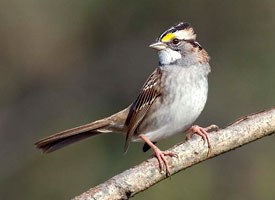The call of the white-throated sparrow, Zonotrichia albicollis, had always interested Rusty Gonser and his late wife, Elaina Tuttle. For most of their lives, they researched this sparrow together. They found that a completely random mutation had made brilliant evolutionary changes for this species.
The mutation happened in the second chromosome, rendering the large amount of genetic information unpaired. This is what was dubbed a 'supergene.' This allowed for two different 'morphs' of the bird. They were different in their coloring and behavior, and only mated with the opposite morph. Scientists involved with this project compare this to the evolution of the X and Y chromosomes in humans. Essentially, the sparrow acts as though it has four sexes. Christopher Balakrishnan, a partner of Gonser and Tuttle's explains, "One individual can only mate with one-quarter of the population." For example, a white-striped female can only mate for a tan striped male. The opposite is also true.
The interesting part of this research conducted over centuries is what is included on the second chromosome - it does not contain sexual development coding or the sex chromosome. Instead, the large amount of genetic information affected contains some coding for sexual behavior. Balakrishnan does not believe this four-sex system will be around much longer, since it is very unstable. It is harder to find a mate in a four-sex system compared to a two-sex system. Eventually, when it is too hard to find a mate, the two-sex system will be the best choice. Until then, studying the sparrows will help us understand the evolution of chromosomes more. Maybe more research will reveal a way to help this four-sex system prevail.

No comments:
Post a Comment